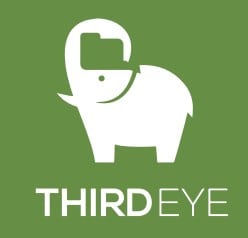Data Science and the Art of Persuasion
Data science is growing up fast. Over the past five years companies have invested billions to get the most-talented data scientists to set up shop, amass zettabytes of material, and run it through their deduction machines to find signals in the unfathomable volume of noise. It’s working—to a point. Data has begun to change our relationship to fields as varied as language translation, retail, health care, and basketball.
But despite the success stories, many companies aren’t getting the value they could from data science. Even well-run operations that generate strong analysis fail to capitalize on their insights. Efforts fall short in the last mile, when it comes time to explain the stuff to decision makers.
In a question on Kaggle’s 2017 survey of data scientists, to which more than 7,000 people responded, four of the top seven “barriers faced at work” were related to last-mile issues, not technical ones: “lack of management/financial support,” “lack of clear questions to answer,” “results not used by decision makers,” and “explaining data science to others.” Those results are consistent with what the data scientist Hugo Bowne-Anderson found interviewing 35 data scientists for his podcast; as he wrote in a 2018 HBR.org article, “The vast majority of my guests tell [me] that the key skills for data scientists are….the abilities to learn on the fly and to communicate well in order to answer business questions, explaining complex results to nontechnical stakeholders.”
In my work lecturing and consulting with large organizations on data visualization (dataviz) and persuasive presentations, I hear both data scientists and executives vent their frustration. Data teams know they’re sitting on valuable insights but can’t sell them. They say decision makers misunderstand or oversimplify their analysis and expect them to do magic, to provide the right answers to all their questions. Executives, meanwhile, complain about how much money they invest in data science operations that don’t provide the guidance they hoped for. They don’t see tangible results because the results aren’t communicated in their language.
Gaps between business and technology types aren’t new, but this divide runs deeper. Consider that 105 years ago, before coding and computers, Willard Brinton began his landmark book Graphic Methods for Presenting Facts by describing the last-mile problem: “Time after time it happens that some ignorant or presumptuous member of a committee or a board of directors will upset the carefully-thought-out plan of a man who knows the facts, simply because the man with the facts cannot present his facts readily enough to overcome the opposition….As the cathedral is to its foundation so is an effective presentation of facts to the data.”
Executives complain that data science doesn’t provide the guidance they hoped for.
How could this song remain the same for more than a century? Like anything else this deeply rooted, the last-mile problem’s origins are multiple. For one, the tools used to do the science include visualization functionality. This encourages the notion that it’s the responsibility of the data person to be the communicator. The default output of these tools can’t match well-conceived, fully designed dataviz; their visualization often isn’t as well developed as their data manipulation, and the people using the tools often don’t want to do the communicating. Many data scientists have told me they’re wary of visualization because it can dumb down their work and spur executives to draw conclusions that belie the nuance and uncertainty inherent in any scientific analysis. But in the rush to grab in-demand data scientists, organizations have been hiring the most technically oriented people they can find, ignoring their ability or desire (or lack thereof) to communicate with a lay audience.
That would be fine if those organizations also hired other people to close the gap—but they don’t. They still expect data scientists to wrangle data, analyze it in the context of knowing the business and its strategy, make charts, and present them to a lay audience. That’s unreasonable. That’s unicorn stuff.
To begin solving the last-mile problem, companies must stop looking for unicorns and rethink what kind of talent makes up a data science operation. This article proposes a way for those that aren’t getting the most out of their operations to free data scientists from unreasonable expectations and introduce new types of workers to the mix. It relies on cross-disciplinary teams composed of members with varying talents who work in close proximity. Empathy, developed through exposure to others’ work, facilitates collaboration among the types of talent. Work is no longer passed between groups; it’s shared among them.
A team approach—hardly new, but newly applied—can get data science operations over the last mile, delivering the value they’ve created for the organization.
Why Are Things Like This?
In the early 20th century, pioneers of modern management ran sophisticated operations for turning data into decisions through visual communication, and they did it with teams. It was a cross-disciplinary effort that included gang punch operators, card sorters, managers, and draftsmen (they were nearly always men). Examples of the results of this collaboration are legion in Brinton’s book. Railroad companies and large manufacturers were especially adept, learning the most efficient routes to send materials through factories, achieving targets for regional sales performances, and even optimizing vacation schedules.









